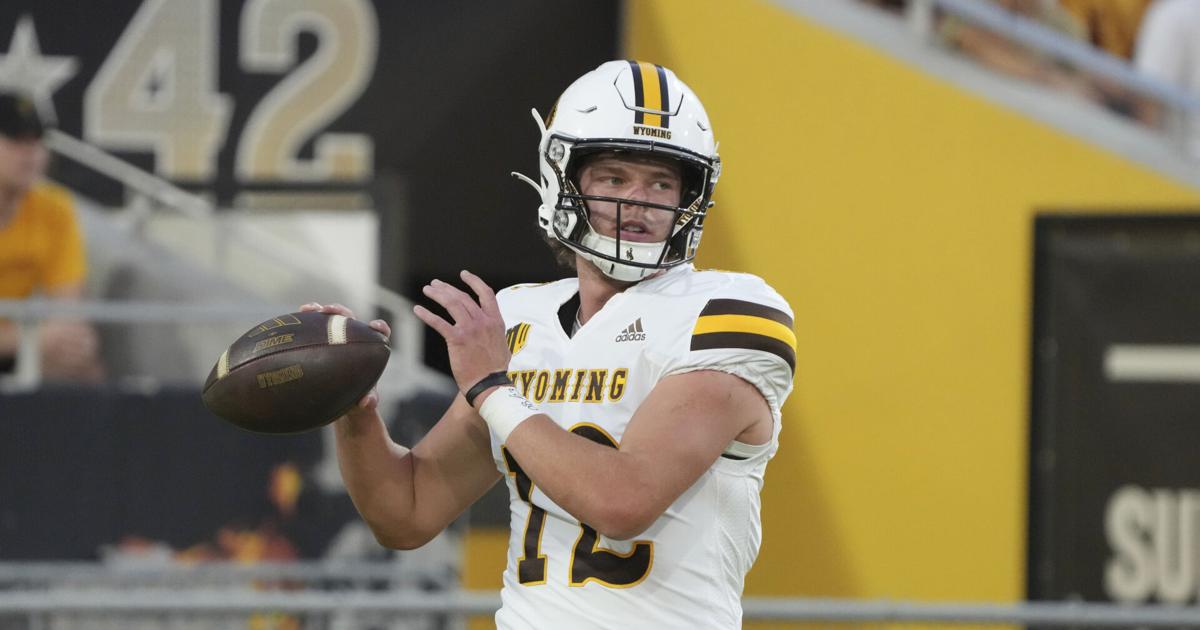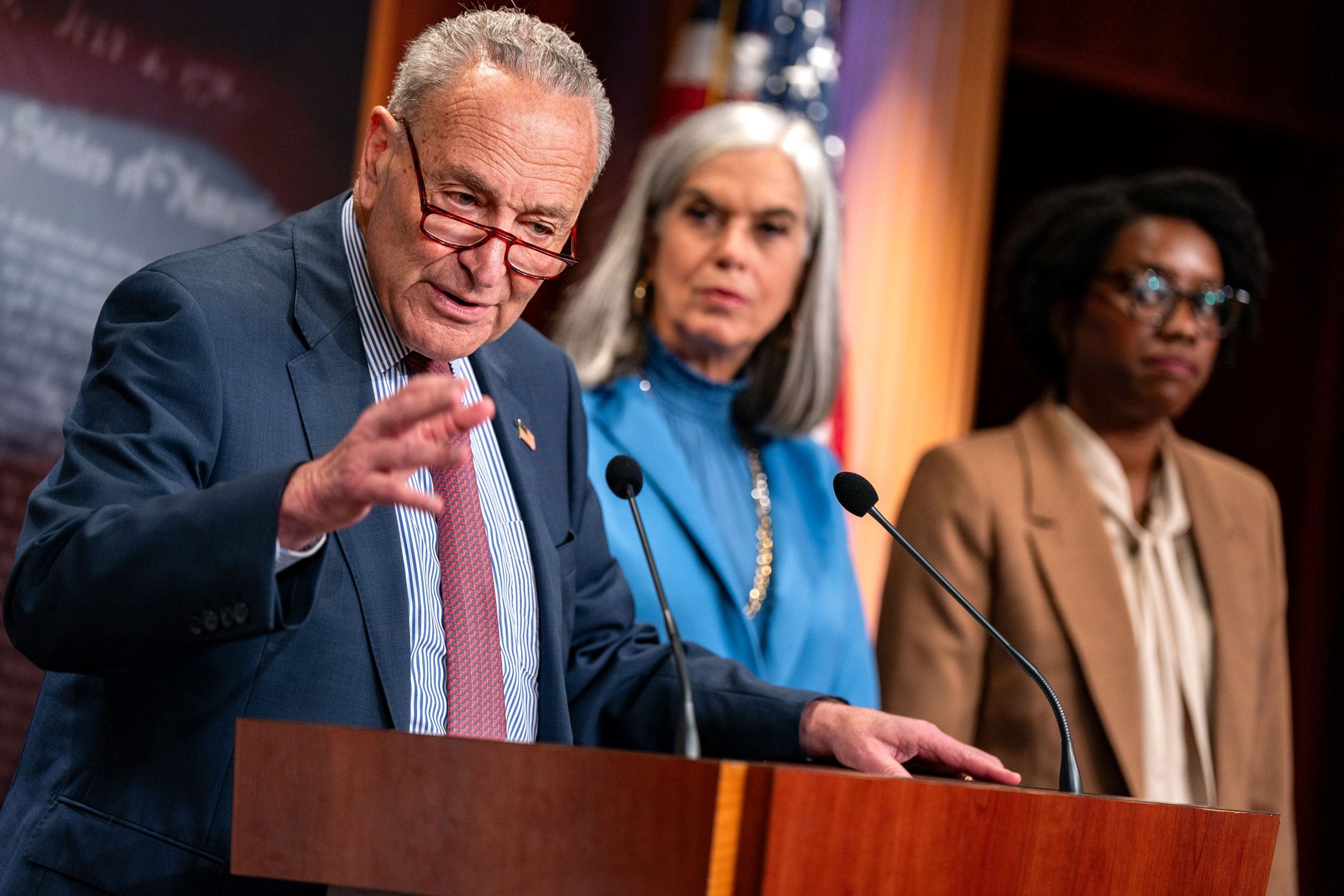Before his first game at Texas, Steve Sarkisian had already learned that a football team often takes on the persona of its coach.
It was a truth he hadn’t fully grasped the first two times he took over programs, but it made his third attempt to be a head coach more intentional. Sarkisian had something to prove and so did the Longhorns, who had spent the preceding decade toiling in mediocrity chasing the ghost of past success.
“I feel like this is right where I’m supposed to be at this time in my life,” Sarkisian said on Sept. 2, 2021. Alluding to lessons he learned from his mentors Pete Carroll and Nick Saban, Sarkisian said, “You’ve got to know who you are, have a belief in who you are and stick to your beliefs.”
And the goal, as with every new head coach, was clear: “I came here to win championships.”
In his third season, Texas football is undeniably succeeding. The No. 3 Longhorns won the Big 12, their first conference championship since 2009, and are set to meet No. 2 Washington in the Sugar Bowl on Jan. 1 with a trip to the national title game on the line.
After a string of failed coaches in Austin, how did Sarkisian emerge from his own winding path to become the one who took Texas back to prominence? It starts with a clear plan that he stuck to win or lose, elite recruiting, player development, a strong culture and stability for a program that lacked all of the above in its lean years. As much as anything, it has been Sarkisian’s consistency that has embodied the program’s latest title chase.
“He knows who he is and lives who he is,” Texas athletic director Chris Del Conte said.
GO DEEPER
‘A full-circle moment’: Texas’ Steve Sarkisian faces Washington program he helped revive
Sarkisian’s hire drew mixed reactions from outside the program.
In 2015 he had been fired by USC for issues related to alcohol abuse. He sought treatment, restarted his career as a $30,000-a-year analyst at Alabama and climbed back up the coaching ladder, rebuilding his reputation in successful play-calling stops with the NFL’s Atlanta Falcons and the prolific 2020 Crimson Tide offense that won a national title. Some were bullish on Sarkisian’s chances based on his work in Tuscaloosa.
But his head coaching record to that point across seven seasons at USC and Washington (46-35) represented a lower winning percentage (.567) than the coach Texas had just fired, Tom Herman, who was 32-18 in four seasons with the Longhorns (.640).
“People gave us a lot of grief,” Del Conte says now.
What stood out to Del Conte, board of regents chair Kevin Eltife and school president Jay Hartzell — the UT power trio driving the hire — was Sarkisian’s grasp of what the Texas job required.
“His personal story, his plan for Texas, everything he said in that interview process, you knew that he had the gravitas for this moment, the program and the institution,” Del Conte said. “He could handle everything that is Texas, and the moment was not too big for him.”
Del Conte also admired Sarkisian’s work at Washington. The Huskies were 18-53 in the six seasons before Sarkisian arrived as a 33-year-old first-time head coach. After a 5-7 debut in 2009, he led the Huskies to four consecutive bowls. Washington had gone 0-12 the year before Sarkisian was hired; the Huskies went 34-29 in Sarkisian’s five years.
“That program was left for dead (before Sarkisian arrived),” Del Conte said. “It’s easy to take someone else’s program that’s been successful and say, ‘He’s the guy.’ It’s the guy that built the team that’s the guy.”
When Sarkisian walked through the doors at Texas, he provided “a breath of fresh air.”
“He has a demeanor that players buy into,” said Temple coach Stan Drayton, who worked for both Herman and Sarkisian at Texas. “He comes off as fair, he comes off as real. … (He’s) very approachable and straightforward. No sugarcoating conversations. He tells guys what they need to hear all the time.”
That approach quickly earned Sarkisian support. It wasn’t universal; no new head coach gets 100 percent buy-in from a 120-player roster, and there was substantial roster turnover after his first season. But Sarkisian’s direct approach proved effective.
“Sark didn’t lie to kids,” said Drayton, who spent the 2021 season at Texas before taking the Temple job. “If they were good enough, they were good enough. If they weren’t, he would tell them.
“He was very cut-and-dried with his personality. ‘Hey, if you enter your name in the portal, you’re telling me you don’t want to be here, that’s it. We’ll move on.’ He never tried to hold anybody back that way. … He told them what they needed to work on. If guys didn’t want to or agree with that, then those guys were allowed to move on.”
Before he signed his first full recruiting class, Sarkisian had to tailor the 2021 team to his preferences. From culture to schemes to staff, he tried to reconstruct Texas from the ground up.
In discussing his approach to that first Texas team recently, Sarkisian alluded to a 2021 conversation he had with Carroll, for whom Sarkisian worked in his first stint at USC as an assistant.
“(Carroll) said, ‘What do you think about the team?’” Sarkisian recalled. “I said, ‘I think I think we’re pretty good. But I may have to adjust some things to really fit them.’ And I remember him telling me, he said, ‘You can do what they’ve done before, but you have to be prepared to expect the same results. Or you can really dive into doing it your way. And there may be some bumps along the way … but in the end, you might get different results and possibly better results if you get people to buy into doing it your way.’”
Sarkisian was sold. Rather than tweaking his approach to fit the roster, he would do everything — from schemes to offseason conditioning to academics and even to community service — his way.
The Longhorns didn’t appear to be a full rebuild at first glance, having gone 7-3 and finishing 19th in the AP poll the season before Sarkisian arrived. But major attrition from the 2018 and 2019 recruiting classes left him with a thin roster.
That meant growing pains in Sarkisian’s first season. Arkansas ran the Longhorns over in Fayetteville. Texas’ defense wore down time and again throughout a six-game midseason losing streak, the program’s longest since 1956. Defensive line coach Bo Davis snapped after he heard a player laughing in the back of the bus after a 30-7 road loss to Iowa State. The Longhorns lost at home to Kansas when the Jayhawks were still a conference doormat.
Regardless of results, Sarkisian remained consistent.
“There was no panic,” Del Conte said.
Sarkisian also maintained a positive outlook. He was honest with his team about its deficiencies and it was made clear that losing was not acceptable, Drayton said. But Sarkisian didn’t dwell on the negatives.
“He wouldn’t belabor those games past the next day,” said North Texas tight ends coach Chris Gilbert, who was on Sarkisian’s staff in 2021 and 2022. “He didn’t change his behavior. … When that stuff was going bad, he didn’t go bananas and become this person he typically wasn’t. … He came in and he was always positive about what was next.”
That approach rubbed off on his players. Those who have been at Texas for all three years of the Sarkisian era, many of whom he inherited, reinforced the belief in the future. Players from Sarkisian’s first Texas team, including linebacker Jaylan Ford, defensive tackle T’Vondre Sweat, receiver Jordan Whittington, tackle Christian Jones and center Jake Majors, were integral to changing the culture.
“In this day and age of the transfer portal, when you can go anywhere in the country, at any given time, those guys didn’t,” Sarkisian said. “They believed in what we were doing even through some difficult times in that first season. And not only did they stick around, they improved it, and they made us better.”
Sarkisian had his sights set on competing for a Big 12 title in his second year. After signing the No. 5 recruiting class in the 2022 cycle and adding quarterback Quinn Ewers via the transfer portal, Sarkisian thought the Longhorns had a real chance to contend for conference supremacy.
That belief was partially validated on Sept. 10, 2022 when Texas hosted Alabama. A visit to Darrell K Royal-Texas Memorial Stadium from the No. 1 team in the country would reveal just how far Longhorns had come after their 5-7 showing in 2021. The Longhorns lost Ewers to injury in the first quarter but stood tall in a tight 20-19 loss, thanks to an offensive line that held its own and a defense that played fast and physical.
“There were glimpses,” Del Conte said. “We may not have all the pieces, but schematically we were there.”
There was still more growing up to do, as road losses at Texas Tech and Oklahoma State later that season showed. The Longhorns often started fast but couldn’t always close. Texas fell a game short of a Big 12 title game appearance and finished 8-5, all five losses coming by seven points or less.
“I was disappointed because I felt like we had an opportunity to go play for a Big 12 championship,” Sarkisian said. “And we didn’t get it done in a couple tough losses and we put our fate into somebody else’s hands and it didn’t work out.”
His third year felt like the time for a breakthrough. Two seasons of roster building, including another top-five recruiting class, strengthened depth across the board. Suddenly, Texas’ roster began to resemble the ones in the SEC, the league it will join alongside Oklahoma in 2024.
For the first time in 14 years, Big 12 media voted Texas first in the preseason conference poll. Sarkisian didn’t avoid the storyline. He believed he had a championship-caliber team.
“I wanted our players to get accustomed to the expectations,” Sarkisian said. “And the expectations were that we were going to be a good team, that we were going to compete for a championship. So let’s get comfortable in that arena. Let’s not shy away from it.”
This season, Sarkisian has maintained the same positive energy he had in his first year, even though the external outlook of the team is vastly different.
“He walks the walk,” special teams coordinator Jeff Banks said in August. “You come in, and immediately his energy level’s higher than everybody in the building. The No. 1 thing that Sark brings to the table is energy and positivity.”
“Any time you ask him, ‘How you doing today, Coach?’ He always said, ‘It’s the best f—ing day ever,’” Gilbert said.
The players fed off of that, sensing their opportunity.
“We all bought in this offseason to Coach Sark. Now, we’re putting it all together,” Sweat said.
Beyond the talent and roster depth, staff stability has been critical to the Longhorns’ success. Of Sarkisian’s 10 current on-field assistant coaches, eight were part of his original Texas staff, including all three coordinators. Only two position coach roles — running back and receivers coach — have seen changes in his three seasons. All five original defensive assistant coaches have remained in the program, though inside linebackers coach Jeff Choate recently accepted the head coaching job at Nevada.
Strength coach Torre Becton, who has drawn acclaim from players and staff for his work with the team, has been with Sarkisian all three years. The personnel and recruiting staff, led by director of player personnel Billy Glasscock, has also remained stable. Multiple other key support staffers have remained.
Higher up within UT leadership, Del Conte says he, Eltife and Hartzell are “in lockstep.”
“Everyone is aligned to the mission of what’s best for the University of Texas,” Del Conte said.

The Longhorns cruised past Oklahoma State 49-21 for their first Big 12 title since 2009. (Jerome Miron / USA Today)
During a four-minute monologue on culture in November, Sarkisian pinpointed the key aspects of it at Texas, including commitment, discipline, accountability, mental and physical toughness, love and vulnerability. He inherited two players who proved vital to his efforts on those fronts: running backs Bijan Robinson and Roschon Johnson. Both were model teammates who were never late, had a strong work ethic, were tough, made good grades and represented what Sarkisian wanted Texas football to be.
“Those guys were the standard of what every day should look like,” Drayton said. “Whenever you have two players like that who can bridge the gap from coach to player, that’s a huge advantage.”
Sarkisian shared a story about Robinson and Johnson ensuring that the team room was cleaned and trash was not left scattered around after meetings. When they left, the rest of the running backs assumed the task.
“Now, when we break a team meeting, everybody looks around (to clean up),” Sarkisian said. “I know those sound like little things, but in the end, those are really big things to me because that means that’s the way we’re thinking all of the time. … I really celebrate that stuff because I believe those actions and that behavior leads to the big victories.”
Combined with Texas’ talent — the Longhorns are sixth in the 247Sports Team Talent Composite — it has become a winning formula. In September, Texas went on the road and beat Alabama by double digits. It wasn’t a fluke. The Longhorns beat the Crimson Tide up front, possessed the ball for the final 7:14 and won by 10. They snapped Alabama’s 21-game home winning streak and became only the second visiting team to win at Bryant-Denny Stadium since Sept. 26, 2015, a span of 54 games.
After Texas’ lone loss, to rival Oklahoma in October, Sarkisian began Monday morning team meetings the rest of the season with the words “BIG 12 CHAMPIONSHIP GAME!!!!” on the projector, to increase urgency. “We couldn’t afford to stub our toe again,” Sarkisian said. The margin for error was gone. Another loss and Texas would be back in the spot it was the year before, leaving its conference title fate in someone else’s hands.
“Sark does a good job of making sure that we treat every game like it’s the biggest game of the year,” Ford said.
The Longhorns endured close calls against Houston and Kansas State while Ewers missed time with a right shoulder injury but won seven in a row to finish atop the Big 12.
They’ve won a multitude of ways. The defense has been consistent and often suffocating. The offense, though not as consistent, has been explosive behind Sarkisian’s game-planning and play-calling prowess. The special teams units have been a difference maker. The little things have added up, like when the Longhorns needed a fourth-down stop to beat Kansas State in overtime or got serviceable play from Maalik Murphy filling in for Ewers.
Now the Longhorns are back on the big stage, two wins away from their first national title since 2005. Washington, the team Texas lost to in the 2022 Alamo Bowl, stands in the way.
Although Texas’ position in the landscape has changed, Sarkisian’s message won’t. Sarkisian often says “trust equals time plus consistency.” Gilbert notices the things Sarkisian says publicly now mirror the things he was saying two years ago, when the Longhorns toiled through a losing season and few outside the building were listening.
“He did a good job of sticking to his guns,” Gilbert said. “He had a great plan. … He delivered the same message over and over and over and over.”
The competition will get tougher in the SEC. But Sarkisian and his staff continue to recruit at an elite level: The Longhorns’ 2024 class currently ranks fifth in the nation and has four five-star prospects. They are making wise use of the transfer portal. Ewers is mulling a return to Texas for 2024, which would give next year’s squad a huge boost. The Longhorns appear well-constructed for the long haul.
Del Conte is pleased to see Sarkisian’s vision come to life.
“He was beyond prepared for the moment, beyond prepared for the job,” Del Conte said. “Everything he said in our interviews has come to fruition in terms of how he was going to build out his program.”
But, Del Conte says, “We’re not done yet. We have a lot of work to do. Once you start resting on your laurels, you can kiss your butt goodbye. … You can’t be satisfied by knocking at the door.”
To bust the door down, Sarkisian won’t change a thing. He’s right where he’s supposed to be.
(Top photo: Tim Warner / Getty Images)




























/cdn.vox-cdn.com/uploads/chorus_asset/file/25431700/STK201_SAM_ALTMAN_CVIRGINIA_A.jpg)





